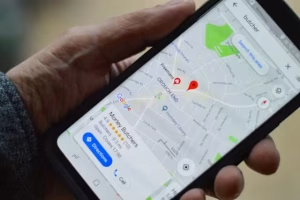In the digital marketplace, trust is your most valuable asset. Yet, it is the most difficult to earn. Consumers are inundated with marketing messages, leading to a default level of skepticism. How do you, as a small business, cut through that noise? The answer is not to shout louder. The answer is to let others speak for you. Data shows that nearly 98% of consumers read online reviews for local businesses. This behavior is not a trend; it is a fundamental shift in how people make decisions.
This shift is based on a powerful psychological trigger called social proof. At its core, social proof is a mental shortcut. It is a phenomenon where people look to the actions and behaviors of others to determine the correct course of action in a given situation. We are wired to follow the “wisdom of the crowd.” This principle was famously identified and cataloged by Dr. Robert Cialdini, a foundational expert in persuasion. He detailed social proof as one of the key “principles of influence” that governs human behavior.
When we see a restaurant full of people, we assume the food is good. When a product has thousands of five star reviews, we assume it is a quality item. This is social proof in action.
However, understanding the definition of social proof is not a business strategy. Simply having a few testimonials is not a framework for growth. This article is not a simple definition. It is a technical framework. We will dissect the mechanisms of social proof, analyze its different forms, and provide a data driven plan for small businesses. You will learn how to systematically implement, measure, and optimize social proof to build unshakeable trust. More importantly, you will learn how to use social proof to increase your conversion rates, dominate local search, and create a sustainable feedback loop of customer advocacy.
Why Is Social Proof a Potent Marketing Force?

The power of social proof is not theoretical. Its potency comes from its deep roots in human psychology and its direct, measurable impact on business metrics. Brands that fail to use social proof are essentially marketing with one arm tied behind their backs. They are relying on their own voice in an era where consumers only trust the voices of their peers.
The Psychological Drivers of Social Proof
To implement social proof effectively, you must first understand why it works on a psychological level. It is not just a “nice to have” element on a webpage; it is a cognitive tool that directly addresses a buyer’s deepest anxieties.
- It Builds Instant Trust and Credibility: Trust is the currency of the internet. A new visitor to your website has no reason to believe your claims. Your copy might state you are “the best,” “the fastest,” or “the most reliable.” To the consumer, this is just noise. But when a third party, a real person, makes the same claim in a testimonial, it is perceived as an objective fact. This external validation acts as a trust signal, transferring the credibility of the reviewer to your brand. Effective social proof is what separates an empty promise from a validated fact.
- It Simplifies Decision-Making: The modern consumer faces “analysis paralysis.” There are too many choices. The human brain, seeking to conserve energy, looks for shortcuts, or heuristics, to make decisions faster. Social proof is perhaps the most powerful heuristic in commerce. Instead of spending hours comparing complex features, a buyer can simply look at the review count. “If 10,000 other people bought this and rated it 4.8 stars,” the logic follows, “it is a safe and correct choice.” Social proof offloads the heavy cognitive burden of decision making from the individual to the “crowd.”
- It Leverages FOMO (Fear of Missing Out): FOMO is a powerful motivator rooted in our desire for social inclusion. When potential customers see that others are buying a product, enjoying a service, or benefiting from an experience, it triggers a feeling of anxiety. They fear being left behind or missing out on a good thing. Displaying social proof like “20 units sold in the last hour” or showing real time customer activity creates a senseof urgency and scarcity. This specific use of social proof compels the user to act now, rather than later.
The Data Driven Business Impact
The psychological drivers are interesting, but the business impact is what matters. In business, the impact of social proof is not vague. It can be tracked, measured, and directly tied to your key performance indicators (KPIs).
- Massive Conversion Rate Optimization (CRO): This is the primary benefit. Adding social proof to key points in your sales funnel will increase your conversion rate. Placing customer testimonials near a “Buy Now” button can lift conversions. Product pages with customer reviews convert at a significantly higher rate than pages without them. A/B testing consistently proves that pages featuring strong social proof outperform identical pages that lack it.
- Enhanced Customer Loyalty and Brand Advocacy: Social proof is not just for acquiring new customers; it is for retaining current ones. When a customer leaves a positive review, they are not just providing you with marketing material. They are also reinforcing their own decision. This public declaration of their satisfaction makes them more loyal to your brand. They have now publicly aligned themselves with you. This process turns a satisfied customer into a vocal brand advocate, who will then go on to create more social proof for your business, creating a powerful growth loop.
- Demonstrated Authenticity: Today’s consumers are highly skeptical of polished, corporate advertising. They crave authenticity. The best social proof often comes in the form of User Generated Content (UGC). A customer’s unpolished photo of your product on Instagram is often more effective than a high budget professional photoshoot. This raw, unfiltered social proof feels real and relatable, cutting through the cynicism and building a genuine connection with your audience.
The 6 Modalities of Social Proof

Social proof is not a single tactic. It is a category of influence with many different forms, or modalities. Each modality works in a different way and is best suited for a specific context. A robust marketing strategy will use a blend of these types of social proof to build a comprehensive case for their brand.
1. User/Customer Proof (The Foundation)
This is the most common and, for many businesses, the most important form of social proof. It comes directly from your existing customer base. It is the “peer review” that new customers actively seek out before making a purchase.
- Customer Reviews: These are the star ratings and short comments left on platforms like Google, Yelp, or your own product pages. A high volume of positive reviews is a clear signal of quality and reliability. Data shows that the number of reviews is often as important as the average rating.
- Testimonials: These are a more curated and detailed form of user proof. A good testimonial tells a story. It should be specific, highlighting a particular problem the customer had and how your product or service provided the solution.
- Best Practice: The most effective testimonials are not anonymous. They include a full name, a location (especially for local businesses), and a clear photo of the customer. The most powerful testimonials include specific, data driven results.26 “This service is great” is weak. “This service increased our lead flow by 30% in 60 days” is powerful social proof.
- Case Studies: This is the most in depth form of user social proof, common in B2B (business to business) marketing. A case study is a long form article that details the entire customer journey: The Client’s Problem, The Solution You Implemented, and The Measurable Results. It is the ultimate piece of social proof for high value, complex sales.
2. Expert Proof
This type of social proof leverages the approval of a credible, recognized expert or authority in your industry. When a respected figure endorses your product, their credibility is transferred to you.
- Definition: This is approval from someone whose job, education, or status implies they can accurately judge your quality.
- Examples: A dentist recommending a specific brand of toothpaste. A prominent financial analyst suggesting a trading platform. A well known local food critic giving your restaurant a glowing review.
- Value: This form of social proof is a shortcut to trust. The customer does not need to become an expert themselves; they can simply trust the expert’s judgment. Displaying “As seen in Forbes” or “Recommended by the American Dental Association” are classic uses of expert social proof. For a small local business, this could be a quote from the head of the local Chamber of Commerce.
3. Celebrity Proof
Celebrity proof is a form of endorsement from a well known public figure, such as a traditional celebrity or a social media influencer. This modality works by association and aspiration.
- Definition: Using a famous or followed person to endorse your product.
- Examples: A famous athlete wearing a specific brand of shoes in a commercial. A popular Instagram influencer posting about your skincare product.
- Mechanism: This social proof works because consumers want to emulate people they admire. It is less about expertise (like expert proof) and more about transference of the celebrity’s brand. “If this person I like and admire uses this product, then I will like this product too.”
- Micro vs. Macro Influencers: For small businesses, micro influencers (niche experts with 5,000 to 50,000 followers) often provide a better return on investment. Their audience is smaller but highly engaged and trusts their recommendations. This is a more targeted and authentic form of celebrity social proof.
4. Wisdom of the Crowds
This modality of social proof relies on large numbers. It operates on the principle that “if so many people are doing it, it must be the right thing to do.” It is safety in numbers.
- Definition: Leveraging large scale data to imply popularity and correct choice.
- Examples: “Over 1 million units sold.” “Join our community of 50,000 subscribers.” A “Bestseller” tag on an Amazon product. Seeing a waiting list to get into a club or restaurant.
- Value: This type of social proof is highly effective at a glance. It creates an immediate impression of popularity and success. For a small business, this could be as simple as “Serving the Omaha community for 25 years” or “Over 5,000 homes painted.” It shows stability and widespread adoption, which is a powerful form of social proof.
5. Wisdom of Friends
This is arguably the most powerful and persuasive form of social proof. It consists of endorsements and recommendations from people the consumer personally knows and trusts.
- Definition: Endorsements from an individual’s own social circle, including friends, family, and colleagues.
- Examples: A Facebook post where a friend asks for a “good local plumber” and three people tag your business. Seeing that several of your Facebook friends “like” a brand’s page.
- Mechanism: This form of social proof combines the trust of a personal relationship with the relevance of a shared social context. It is the digital version of “word of mouth,” which remains the most effective marketing channel. Referral programs, where you incentivize customers to tell their friends, are a way to systemically generate this typeof social proof.
6. Certification/Endorsement
This form of social proof is a stamp of approval from an authoritative third party. It is a passive signal that you meet a certain standard of quality, security, or professionalism.
- Definition: Official badges, seals, or awards from a respected third party entity.
- Examples: The “Google Guaranteed” badge for local service businesses. A “Better Business Bureau (BBB) A+ Rating.” A “Secured by Norton” or “PayPal Verified” seal on a checkout page.
- Value: These “trust badges” are not designed to be the main selling point. They are designed to reduce anxiety at critical decision points. A security seal on a payment form is a form of social proof that says “it is safe to enter your credit card information here.” This passive social proof is critical for reducing friction and cart abandonment.
A Strategic Framework for Implementation
Understanding the types of social proof is the first step. The next is building a system to gather, place, and leverage it.40 Social proof is not a passive asset; it is a dynamic tool that must be actively managed.
Gathering Social Proof Systematically
You cannot wait for social proof to simply appear. You must build a machine that generates it.
- Automate Your Requests: The easiest and most effective method is to use automation. Implement a post purchase email or text message sequence. A few days after a customer receives their product or service, send a polite, automated message asking for a review. Link them directly to your Google Business Profile, Yelp page, or product page. Make it as easy as possible.
- Incentivize User Generated Content (UGC): Do not “buy” positive reviews, as this is unethical and violates the terms of service for most platforms. However, you can incentivize the creation of UGC. Run a monthly contest where customers are entered into a drawing for a $50 gift card if they post a photo of themselves using your product with a branded hashtag. This generates a steady stream of authentic visual social proof.
- Conduct Active Outreach for Case Studies: For your best customers, especially in B2B, an automated email is not enough. You must personally reach out. Call them and say, “We were thrilled with the results we achieved for you, and we would love to feature your company’s success in a case study on our website.” Most clients will be flattered and agree. This provides you with your most powerful, story driven social proof.
Strategic Placement for Maximum Conversion
Where you place your social proof is just as important as having it. Different types of social proof belong at different stages of the customer journey to overcome specific objections.
- On the Homepage: Your homepage should feature your strongest “at a glance” social proof. This includes “As Seen In” media logos (Expert Proof), a scrolling feed of your best 2-3 testimonials (User Proof), and any major awards (Certification Proof).
- On Product/Service Pages: This is the most critical placement for conversion. Customer reviews and star ratings (User Proof) must be placed “above the fold” or directly next to the “Add to Cart” or “Contact Us” button. At this decision point, the customer is looking for a final reason to click, and social proof provides it.
- On Checkout/Contact Forms: This is where customers are most anxious. They are about to part with their money or personal information. This is the place for Certification Proof. Display trust badges like “Secured by…” or “BBB A+ Rating” to reduce friction and anxiety, which will directly lower cart abandonment rates.
Leveraging User Generated Content (UGC)
UGC is the gold standard of authentic social proof. It is content—photos, videos, social media posts, blog comments—created by your customers.
- Create a Branded Hashtag: Encourage your customers to tag you or use a unique hashtag (e.g., #WebHeadsUnited). This collects all your UGC in one place.
- Repurpose UGC in Your Marketing: Ask for permission, then use your customers’ photos and positive comments in your social media ads. Data consistently shows that ads using authentic UGC have a much higher click through rate (CTR) and lower cost per click (CPC) than ads using polished stock photography. It is using social proof as your ad creative, which is incredibly effective.
The Critical Nexus: Social Proof and Local SEO

For small, local businesses, the connection between social proof and search engine optimization (SEO) is not just important; it is everything. Your online reputation is your local SEO.
Your Google Business Profile (GBP) as a Social Proof Engine
Your Google Business Profile (formerly Google My Business) is your most important asset for local marketing. It is, at its core, a social proof engine, and Google treats it as such.
- Reviews as a Primary Ranking Factor: Google has explicitly stated that reviews are a key ranking factor for the local pack (the “map pack”). Google’s algorithm does not just look at your website’s keywords; it looks at your reputation. It wants to show the best, most trusted businesses to its users. A steady stream of positive reviews is a direct signal to Google that you are a high quality, trustworthy local business.
- The Strategy for Reviews: It is not just about having a 5 star rating. The algorithm analyzes three key metrics:
- Review Quantity: A business with 200 reviews will be trusted more than one with 2.
- Review Velocity: A business that gets 5 new reviews every week is seen as more relevant and current than a business whose last review was 8 months ago.
- Review Quality: The average star rating.
- Review Responses: You must respond to your reviews. All of them. Responding to positive reviews shows you are engaged. Responding professionally to negative reviews shows you are accountable. From an SEO perspective, you can even use keywords in your responses. For example: “Thank you for your kind words about our [plumbing service] here in [Omaha].” This reinforces your service and location to Google.
On-Page Local SEO Implementation
You must also pull this social proof from third party sites (like Google) onto your own website. This shows both users and search engines that you are proud of your reputation.
- Embed Reviews: Use a website widget or plugin to embed your Google or Yelp reviews directly onto your service pages. This allows a user to see your great reputation without ever leaving your site. This “fresh” content from a third party is also a positive signal to search engines.
- Create Local Case Studies: Write blog posts that function as case studies for your local clients. Use titles like “How We Helped a [Downtown Omaha] Restaurant Increase Foot Traffic.” This page is rich with local keywords and serves as powerful, long form social proof.
- Implement Schema Markup: This is the most technical and high value action. You can use Review Schema (also known as AggregateRating schema) in your website’s code. This is a snippet of code that explicitly tells Google, “This product has an average rating of 4.9 out of 5 from 350 reviews.” Google then uses this data to display star ratings directly in the search results (SERPs) under your website link. This simple visual social proof in the search results can dramatically increase your click through rate, driving more traffic to your site.
Measuring and Quantifying the Impact

If you cannot measure it, you cannot manage it. The impact of social proof is highly measurable.
Using A/B Testing
This is the most direct way to measure the impact of social proof on conversions.
- The Method: Create two versions of a key page (e.g., a landing page or product page).
- Page A (The Control): The page as it is now, with no social proof.
- Page B (The Variant): An identical page, but with three strong customer testimonials added near the call to action.
- The Test: Use A/B testing software (like Google Optimize or a feature in your landing page builder) to send 50% of your traffic to Page A and 50% to Page B.
- The Result: After a statistically significant number of visitors (e.g., 1,000 to each page), you will be able to see which page has a higher conversion rate. In almost all cases, Page B will win. This gives you hard data, such as “Adding testimonials increased our lead generation by 22%.”
Tracking Key Metrics
Beyond A/B testing, you should constantly monitor metrics that are influenced by social proof.
- Conversion Rate: Track your overall site conversion rate. As you implement a system for gathering and displaying more social proof, you should see this number trend upward.
- Referral Traffic: If you are using influencer marketing (Celebrity Proof) or being mentioned by experts, monitor your “Referral Traffic” in Google Analytics. This will show you exactly how many visitors are coming from those sources.
- Local Pack Rankings: Monitor your ranking in the Google Maps “local pack” for your top keywords. As your Google Business Profile review quantity and velocity increase, you should see your rankings climb.
In conclusion, social proof is not an optional marketing tactic. It is a fundamental, data driven strategy for building trust and driving action. It is the engine of the modern feedback loop: providing an excellent service generates positive social proof, which in turn drives more customers to you, allowing you to provide excellent service to them. A business that systematically harnesses the power of social proof is a business that is built to last.









